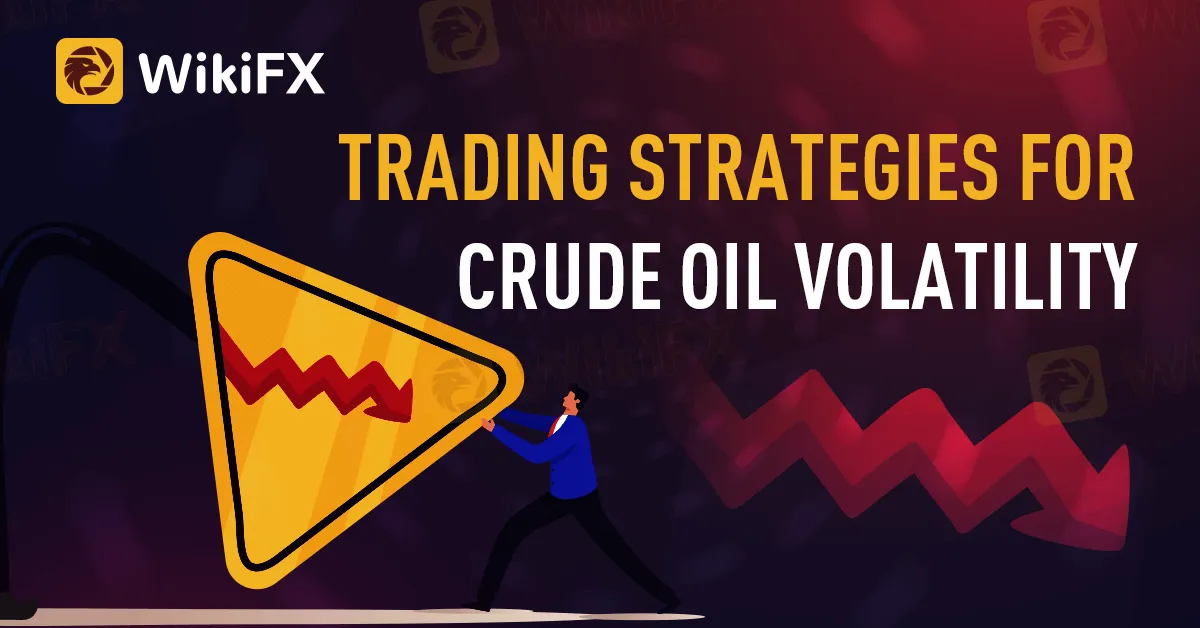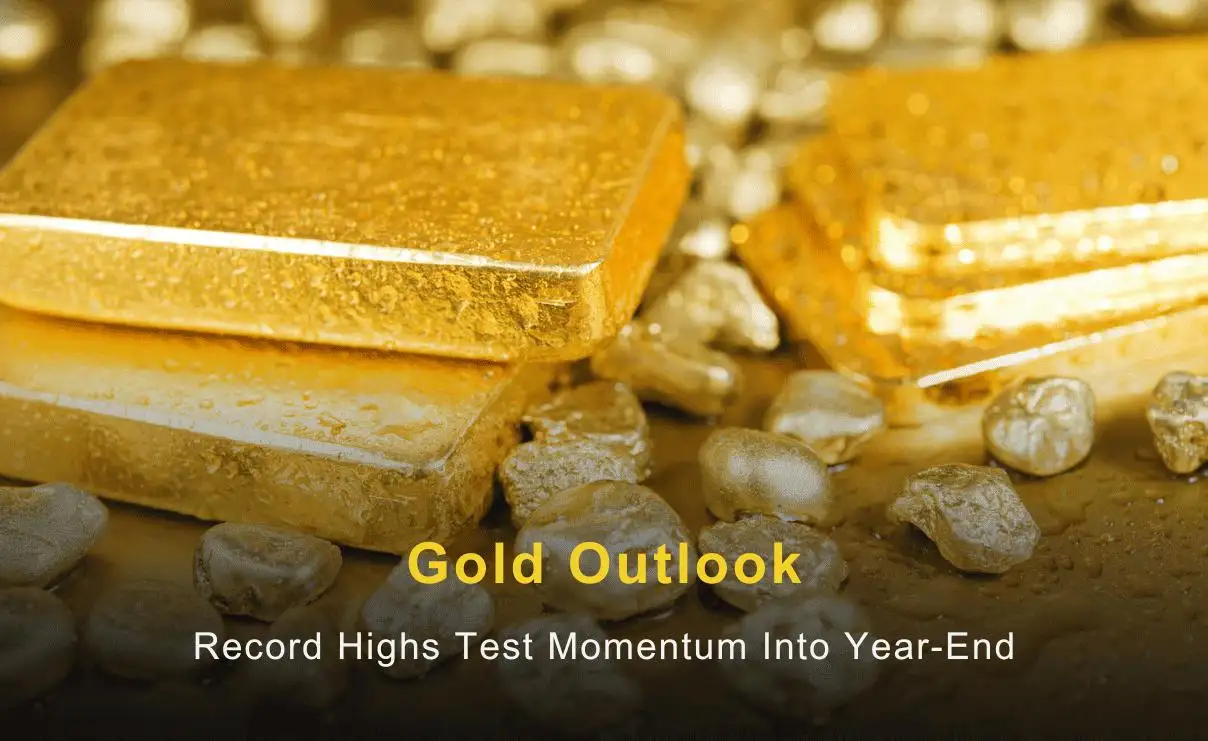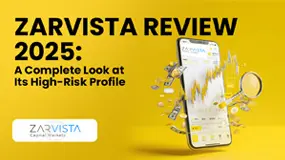Gold Outlook: Record Highs Test Momentum Into Year-End
Gold reached its latest record high during quiet trade on Monday. The question for traders now is whether it can sustain momentum into the year end with depleting volumes.
简体中文
繁體中文
English
Pусский
日本語
ภาษาไทย
Tiếng Việt
Bahasa Indonesia
Español
हिन्दी
Filippiiniläinen
Français
Deutsch
Português
Türkçe
한국어
العربية
Abstract:Because of its unique interaction with the world's political and socioeconomic institutions, crude oil offers tremendous liquidity and huge profit opportunities in most market scenarios. Furthermore, the energy sector's volatility has increased quickly in recent years, resulting in strong patterns of consistent returns for long-term "market timing" methods and short-term "swing trades."

Because of its unique interaction with the world's political and socioeconomic institutions, crude oil offers tremendous liquidity and huge profit opportunities in most market scenarios. Furthermore, the energy sector's volatility has increased quickly in recent years, resulting in strong patterns of consistent returns for long-term “market timing” methods and short-term “swing trades.”
Traders sometimes fail to profit from variations in crude oil prices because they are uninformed of the market's unique features or because they are unaware of the market's hidden hazards, resulting in a loss.
Whether you are a seasoned or inexperienced trader, this article can help you earn some money by trading crude oil.
Because of the current volatility in oil prices, a trader who can forecast the proper direction of the price has a good possibility of profiting.
If oil is now priced at US$85 and the call and put option strike prices are $8 combined, the strategy is profitable if the oil price moves $8. So, whether the oil price rises over $93 or falls below $77, the strategy will benefit.
The term “short straddle” refers to the technique of selling volatility or profiting from a decrease in volatility (or steady volatility). It consists of selling both a put and a call option at the same price. When the price moves inside a narrow range over an extended length of time, a “short straddle” becomes beneficial.
If oil is now priced at US$85 and the call and put option strike prices are $8, then the strategy will benefit if the price of oil moves by no more than $8. As a result, if the price of oil increases to $93 or falls to $77, this approach will be lucrative.
These tactics may work in both ways, so if a trader is interested in oil prices, they can use spreads to benefit while limiting their risks.
A “bear call spread” is a well-known bearish technique that involves selling one OTM option and purchasing another OTM call. The greatest profit for this strategy is the net credit amount, and the maximum loss is the difference between the net credit amount and the strike prices.
The “bull call spread” is a parallel bullish strategy that consists of purchasing one OTM call and selling another OTM call. The greatest loss for this strategy is the net debit amount, and the maximum profit is the difference between the net debit amount and the strike prices.
As a result, traders may possibly profit from fluctuating oil prices, similar to stock prices, by employing these derivative methods.
With knowledge of crude oil trading tactics, you may establish a STO account with access to MT4, one of the industry's premier FX trading platforms, and begin trading right away. For further information, please see the link above.
This post represents the STO Investment Research Desk's personal viewpoint and opinion and should not be considered as investment advice. FX and CFD trading are high-risk investments that may not be suited for everyone; be sure you fully understand the dangers. You might lose part or all of your invested funds.

Disclaimer:
The views in this article only represent the author's personal views, and do not constitute investment advice on this platform. This platform does not guarantee the accuracy, completeness and timeliness of the information in the article, and will not be liable for any loss caused by the use of or reliance on the information in the article.

Gold reached its latest record high during quiet trade on Monday. The question for traders now is whether it can sustain momentum into the year end with depleting volumes.

The year 2026 is expected to be a period of high volatility in the forex market, which from an astrological perspective is viewed as an opportunity for traders who maintain discipline and manage risk effectively. Four zodiac signs stand out in terms of financial prospects: Cancer, which is well suited for long-term trading; Aries, which favors short-term trading but requires strong emotional control; Taurus, which shows strength in generating supplementary income within the trading industry; and Libra, which is best aligned with systematic, rule-based trading. However, astrology serves only as a psychological support tool. True success in trading ultimately depends on a trader’s planning, discipline, and risk management rather than luck alone.

With the year ending and 2026 just around the corner, here comes the golden question: are you profitable this year? If not, this article is a must-read!

ZarVista changed its name from ZaraFX in September 2024. It claims to be a worldwide broker offering various services. It offers the popular MetaTrader 5 (MT5) platform, high leverage of up to 1:500, and various account types tailored to different traders. However, when we look closer, we find many serious risks that anyone thinking about using it should know about. The main problem is how it's regulated - it operates in offshore locations that don't watch financial companies very closely. This gets worse when you add the many user complaints about problems getting their money out, plus a serious legal investigation by Indian authorities in 2025. This review will break down these problems and give you a clear picture of this broker. You need to do careful research, and we suggest you check any broker's current regulatory status and user reviews yourself. A tool like WikiFX can give you current information and important risk warnings.
